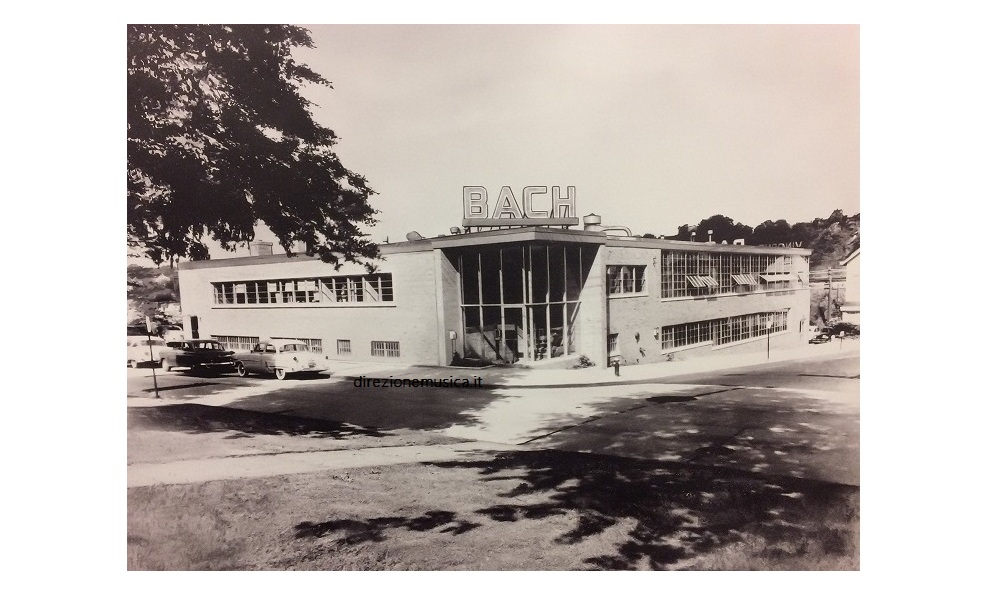Vincent
Shrotenbach nasce a Vienna nel 1890, inizialmente studia
violino ma successivamente passa alla tromba quando ne sentì il
suono maestoso. Sebbene Vincent abbia mostrato una forte
attitudine per le scienze e si sia laureato in ingegneria, ha
rinunciato a una carriera promettente per perseguire il suo primo
amore e un futuro incerto come musicista. Esibendosi sotto il nome
d'arte di Vincent Bach, ha stabilito il successo musicale durante
le sue tournée in tutta Europa.
La prima guerra
mondiale costrinse Vincent a trasferirsi a New York dove arrivò con
soli 5 dollari in tasca. Una lettera al famoso direttore
d'orchestra Karl Muck procurò a Vincent un'audizione e una
conseguente posizione presso la Boston Symphony. Nella stagione
successiva divenne la prima tromba al Metropolitan Opera House.
Durante il tour a Pittsburgh, il bocchino di Vincent fu rovinato da
un riparatore. Vincent ha avuto grandi difficoltà a trovare un
sostituto adeguato. Durante il periodo di congedo, trascorreva del
tempo nel seminterrato del negozio di musica Selmer rimodellando
vecchi bocchini.
Nel 1918, con
un investimento di 300 dollari per un tornio a pedale, Vincent si
dedicò all'attività di costruzione di bocchini. L'attività crebbe
rapidamente e nel 1924 furono prodotte le prime trombe di Bach. I
musicisti spesso si riferivano alla tromba di Bach come ad un vero
e proprio “Stradivarius”, ispirando così il nome Bach Stradivarius.
Bach aggiunse successivamente i tromboni alla sua linea intorno al
1928.
All'età di 71
anni, Vincent vendette la sua azienda. Nonostante avesse ricevuto
altre dodici offerte, comprese alcune più alte, Vincent scelse di
vendere alla Selmer Company. Nel 1964, gli strumenti e i macchinari
per gli strumenti di Bach furono trasferiti da Mount Vernon alla
loro attuale casa a Elkhart, Indiana. Oggi, questi strumenti
continuano a incarnare i più alti standard di artigianalità e ad
aderire ai disegni e ai progetti originali di Vincent.
- - -
-
Born
Vincent Shrotenbach in Vienna in 1890, he
initially received training on violin, but subsequently switched to
trumpet when he heard its majestic sound. Although Vincent also
displayed a strong aptitude for science and graduated with an
engineering degree, he gave up a promising career to pursue his
first love and an uncertain future as a musician. Performing under
the stage name, Vincent Bach, he established musical success as he
toured throughout Europe.
World War I
forced Vincent’s move to New York City where he arrived with only
$5.00 in his pocket. A letter to the famous conductor Karl Muck
procured Vincent an audition and a resulting position with the
Boston Symphony. By the following season, he was first trumpet in
the Metropolitan Opera House. While on tour in Pittsburgh,
Vincent’s mouthpiece was ruined by a repairman. Vincent had great
difficulty in finding a suitable replacement. While on furloughs,
he spent time in the basement of the Selmer Music store remodeling
old mouthpieces.
In 1918, with
the investment of $300 for a foot-operated lathe, Vincent went into
the business of making mouthpieces. The business grew rapidly and
in 1924, the first Bach trumpets were produced. Musicians
frequently referred to a Bach trumpet as a real ‘Stradivarius’,
thus inspiring the name Bach Stradivarius. Bach later added
trombones to his line around 1928.
At the age of
71, Vincent sold his company. Although he received twelve other
offers, including some that were higher, Vincent chose to sell to
the Selmer Company. In 1964, the tooling and machinery for Bach
instruments was moved from Mount Vernon to their current home in
Elkhart, Indiana. Today, these instruments continue to embody the
highest standards of craftsmanship and adhere to Vincent’s original
designs and blueprints.

